Shapes in Nature
Materials included:
• Glossary handout
• Foldable Instructions handout
• Spiderweb handout
• Tessellation leaves
• Bird Data handout
• String
Materials not included:
• Paper
• Writing supplies
• Coloring supplies

• Tape
• Scissors
• Sticks (three per Girl Scout)
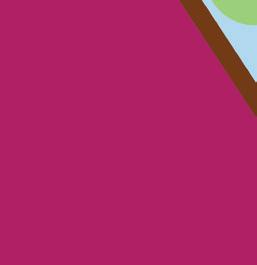
Welcome:
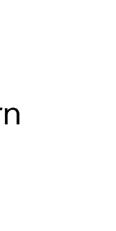
Let’s make the Girl Scout sign and say the Girl Scout Promise and Girl Scout Law together. Would anyone like to lead it?
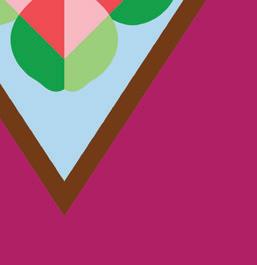
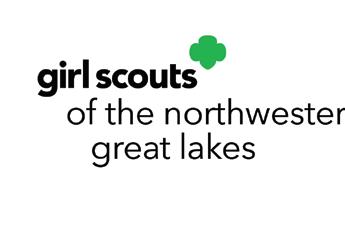
Introduction and icebreaker:

Today we’re going to find shapes in nature! How do you like to spend time outside?
Steps:
1. Track natural objects.
2. Graph natural objects.
3. Make a spiderweb with symmetry.
4. Explore tessellations.
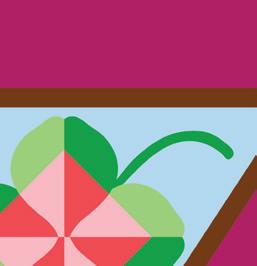
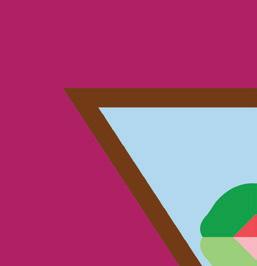
5. Collect data about birds.
Activity 1: Go on a scavenger hunt.
Supplies: Foldable Instructions handout, paper, writing supplies, coloring supplies, scissors
There are so many kinds of nature! There are animals. There are plants. There are insects. There are rocks. There are trees. There are lakes.
All of these things are categories or groups of things made by nature. They’re natural objects. You can have categories within a group, too. You can have land snails, sea snails, big snails, and small snails.
When you’re in nature, you can make tally marks or lines to track what you observe. Observation is looking at something very carefully. It’s also thinking about what you see. Observation helps us learn how nature and the world work.
Make a foldable with four categories, like animals, plants, bugs, and rocks. Search for objects in each category around your neighborhood, the beach, park, or a botanical garden. When you find a natural object from a category, add a tally mark to your foldable.
Activity 2: Make a bar graph.
Supplies: Paper, writing supplies, coloring supplies
You made tally marks in step 1. Each tally mark stood for a natural object. Each tally mark is also a piece of data. Data is information. You can collect it in many different ways. You can observe. You can ask questions. You can measure.
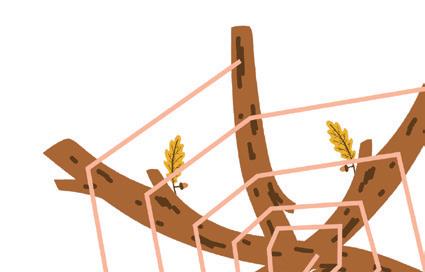
Scientists also collect data. They think about what it might mean. They share it with other people. They might give a presentation or make a poster. Just like scientists, you can share your data with others.
A bar graph shows data with rectangles that represent how much or how many of something there are. It’s an easy way to compare categories.
To make a bar graph with your data from step 1, make a line across your paper. Draw a second line going up. Add numbers to that line, starting at 1 and going up. Add your categories to the bottom row. Draw a rectangle above each. Make each rectangle as tall as the number of objects in the category, going straight up.
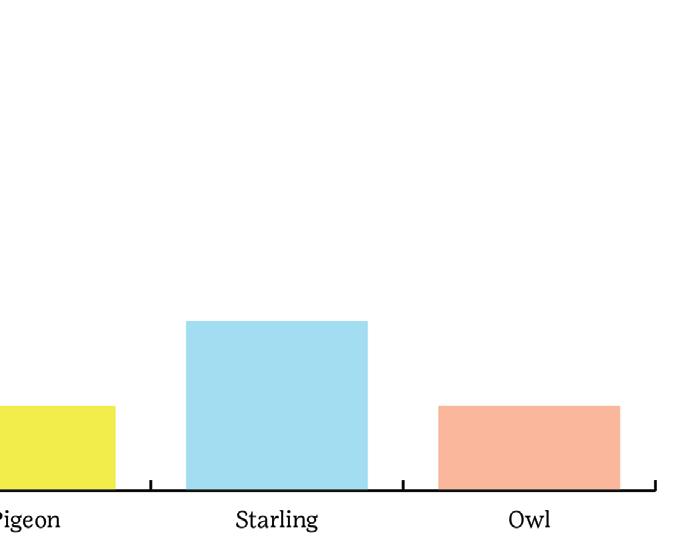
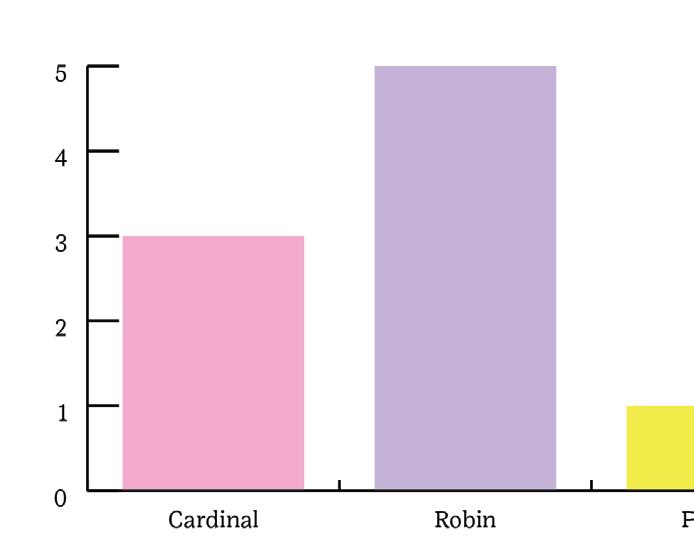
Activity 3: Make a spiderweb with yarn and sticks.
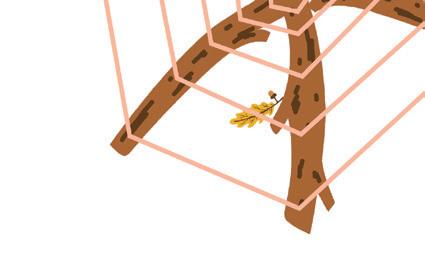
Supplies: Spiderweb handout, sticks (three per Girl Scout), string

Have you ever observed any patterns in nature? A pattern is when something repeats. Think of a ladybug’s dots. Imagine snakeskin. Spiderwebs can have patterns, too. Some have symmetry. Something is when it is the same on both sides. They reflect each other. Think of butterfly wings or a set of eyes. Orb spiders make round webs. Orb means circle or ball. The webs have radials. Radials come out from a center point. They’re connected with a spiral. A circles from the center. The center of the web is a spiral. It’s
Put two or more sticks in a cross shape. This will make one center where all the radials cross. Wrap yarn around the radials. Go from one radial to the next in the circle. This makes a spiral of yarn from the center, just like a spiderweb.
Activity 4: Create a leaf tessellation quilt.
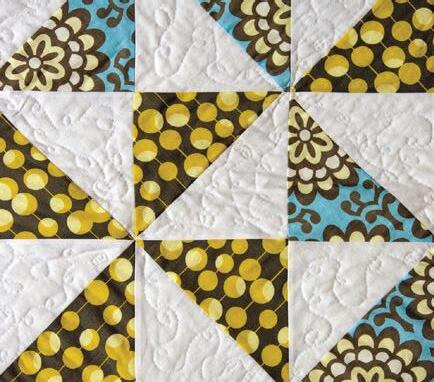




Tessellation leaves, coloring supplies, tape
Have you ever seen a shape repeat over and over, like on a rug or tile flooring? Have you seen a pattern without any space in between? They’re all around us in nature. Think of a pineapple or honeycomb. These are tessellations.
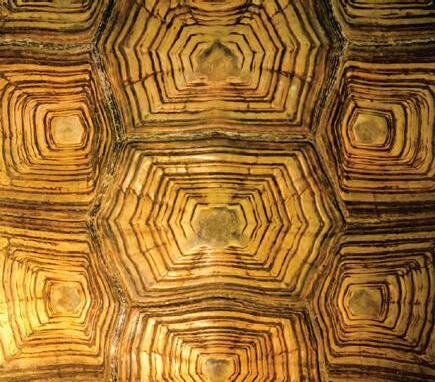
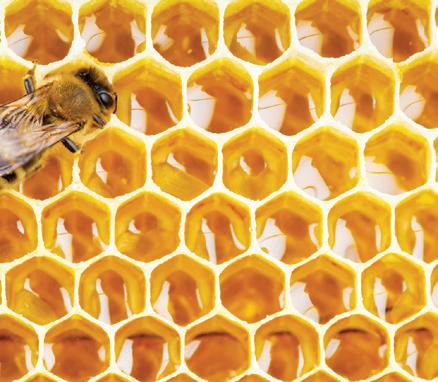
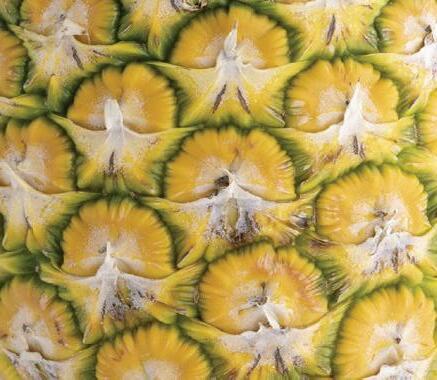
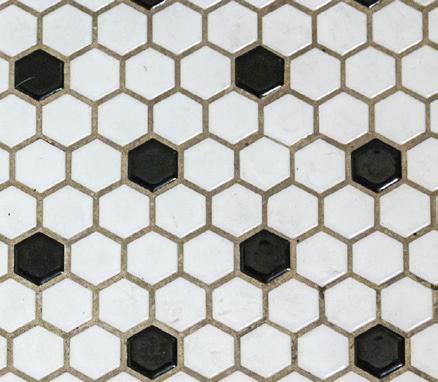
















A tessellation is when shapes fit together. The pattern repeats without any gaps. It never overlaps. It’s like a puzzle with pieces that are all the same shape. Think of a shape you know. Do you think it will tessellate? Some shapes don’t. Circles don’t tessellate because a pattern of circles would have gaps.




Quilts are made from pieces of cloth. They’re sewn together without any gaps. Many quilts have tessellations. Leaves can tessellate too! As a troop, make your own tessellation leaf quilt. Color your leaf. As a troop, fit them together in a tessellation. Tape them together or glue them on to a larger piece of paper.

Shapes in Nature | 9 Shapes in Nature | 9 Shapes in Nature | 9
Activity 5: Collect data about birds.
Supplies: Bird Data handout, writing supplies
Birds can be identified by their shape, color, sound, and what they’re doing. You can find birds in your neighborhood, the woods, the park, or the zoo. You can even watch videos and livestreams of birds in nature.
A data table is a chart that lists information in rows (lines that go side to side) and columns (lines that go up and down). To make your own table, use the “How to Collect Data About Birds” handout and go bird-watching. Make a column to tally and total each type of bird you see. Add the numbers in the row. This is the total number of birds you saw. Show your data table to someone else. Tell them about the birds and how many you saw.
Running out of time? This is a great take-home activity!
Wrap-up:
End the meeting with a friendship circle and a friendship squeeze. Have the Girl Scouts help with any clean-up tasks. Talk about what you are doing at the next meeting, get their ideas for activities, and share upcoming meeting dates, homework, volunteer needs, and other relevant information with caregivers as they arrive for pick-up. Consider sending a follow-up text with this information if needed.
Formas en la Naturaleza
Materiales incluidos:

• Glosario
• Hoja “Instrucciones para Hacer un Folleto”
• Hoja “Formas de las Telarañas”
• Teselado de hojas
• Hoja “Datos sobre Aves”
• Hilo
Bienvenida:
Materiales no incluidos:
• Hojas de papel
• Lápices o plumas (bolígrafos)
• Materiales para colorear



• Cinta adhesiva
• Tijeras
• Palitos de madera (tres por Girl Scout)
Hagamos la señal de Girl Scouts mientras decimos juntas la Ley y la Promesa de Girl Scouts. ¿Alguna de ustedes quisiera dirigir?



Introducción y rompehielos:
¡El día de hoy vamos a encontrar formas en la naturaleza! ¿Cómo les gustaría pasar el tiempo al aire libre!
Pasos:

1. Localiza objetos en la naturaleza.
2. Grafica usando objetos en la naturaleza.
3. Haz una telaraña con simetría.
4. Investiga sobre los teselados o teselaciones.
5. Recopila datos sobre las aves.
Actividad 1: Aventúrate en una búsqueda del tesoro.
Materiales: Hoja “Instrucciones para Hacer un Folleto”, hojas de papel, lápices o plumas (bolígrafos), materiales para colorear y tijeras
¡Hay demasiados tipos de naturaleza! Hay animales, plantas, insectos, rocas, árboles, lagos.
Todas estas cosas son categorías o grupos de cosas hechas por la naturaleza. Son objetos naturales. También puede haber categorías dentro de un grupo. Puedes tener caracoles terrestres, caracoles marinos, caracoles grandes y caracoles pequeños.
Cuando estás en la naturaleza, puedes agregar líneas o marcas de conteo para rastrear lo que observas. La observación es ver y analizar algo detalladamente. Es incluso pensar en lo que ves. La observación nos ayuda a aprender cómo funciona la naturaleza y el mundo en que vivimos.
Haz un folleto con cuatro categorías, como animales, plantas, insectos y rocas. Busca objetos en cada categoría en tu vecindario, la playa, el parque o un jardín botánico. Cuando encuentres objetos naturales de una categoría, coloca una marca de conteo en tu folleto.

Actividad 2: Haz un gráfico de barras.

Materiales: Hojas de papel, lápices o plumas (bolígrafos), materiales para colorear Agregaste marcas de conteo en el paso 1. Cada marca de conteo representaba un objeto de la naturaleza. Cada marca de conteo es incluso un dato. Los datos son información. Puedes recopilarlos de muchas maneras diferentes. Puedes observar, hacer preguntas o medir.
Los científicos también recopilan datos. Analizan lo que podrían significar. Los comparten con otras personas. Pueden hacer una presentación o un cartel. Al igual que los científicos, tú también puedes compartir los datos que descubriste con los demás.










Un gráfico de barras muestra los datos con rectángulos (barras) que representan cuánto hay de algo. Es una forma fácil de comparar las categorías.

Para hacer un gráfico de barras con los datos que obtuviste del paso 1, traza una línea en el papel. Dibuja una segunda línea hacia arriba. Agrega números a esa línea, comenzando en 1, después 2 y así sucesivamente. Agrega tus categorías a la fila inferior. Dibuja un rectángulo encima de cada uno. Haz que cada rectángulo sea tan alto como el número de objetos en la categoría, yendo hacia arriba.

Actividad 3: Haz un telaraña con hilo y palitos de madera.
Materiales: Hoja “Formas de las Telarañas”, palitos de madera (tres por girl scout), hilo ¿Alguna vez has observado algún patrón en la naturaleza? Un patrón es cuando algo se repite. Piensa en los puntos de una catarina (mariquita) o en la piel de las serpientes. Las telarañas también pueden tener patrones. Algunas tienen simetría. Algo es simétrico cuando es igual en ambos lados. Se reflejan entre sí. Piensa en las alas de una mariposa o en un par de ojos. Las arañas tejedoras de orbe hacen telarañas redondas. Esfera (orbe) significa círculo o bola. Las telarañas tienen radiales. Los radiales salen de un punto central. Están conectados con una espiral. Una circula desde el centro. El centro de la telaraña es una espiral. La telaraña está hecha de seda.
Coloca dos o más palitos de madera en forma de cruz. Esto hará un centro donde se cruzan todos los radiales. Envuelve hilo alrededor de los radiales. Ve de un radial al siguiente en el círculo. Esto forma una espiral de hilo desde el centro, como una telaraña.




Actividad 4: Crea un edredón de teselado (mosaico) de hojas.

Teselado de hojas, materiales para colorear, cinta adhesiva ¿Alguna vez has visto alguna forma repetirse una y otra vez, como en una alfombra o en un piso de azulejos? ¿Has visto un patrón sin ningún espacio en el medio? Están a nuestro alrededor en la naturaleza. Piensa en una piña o un panal. Estos son













Shapes in Nature | 9
Una teselación es cuando las formas encajan entre sí. El patrón se repite sin espacios. Nunca se superpone. Es como un rompecabezas con piezas que tienen todas la misma forma.
Piensa en una forma que conozcas. ¿Crees que podría formar una teselación? Algunas formas no pueden. Los círculos no forman teselaciones (mosaicos) porque habría espacios vacíos en el patrón.
Los edredones están hechos de pedazos de tela. Están cosidos juntos sin ningún espacio. Muchos edredones tienen teselaciones. ¡Las hojas también pueden teselar! Como tropa, hagan su propio edredón de teselado de hojas. Coloreen su hoja. Como tropa, colóquenlas juntas en un teselado. Péguenlas con cinta adhesiva o sobre una hoja de papel más grande.
Actividad 5: Recolecta datos sobre las aves.
Materiales: Hoja “Datos sobre Aves,” lápices o plumas (bolígrafos)
Las aves se pueden identificar por su forma, color, sonido y lo que están haciendo. Puedes encontrar pájaros en tu vecindario, en el bosque, en el parque o en el zoológico. Incluso puedes ver videos y transmisiones en vivo de aves en la naturaleza. Una tabla de datos es un gráfico que enumera información en filas (líneas (horizontales) que van de lado a lado) y columnas (líneas (verticales) que van hacia arriba y hacia abajo). Para hacer tu propia tabla, usa el folleto “Cómo recopilar datos sobre aves” y observa a las aves. Haz una columna para contar y sumar cada tipo de ave que observas. Suma los números en la fila. Este es el número total de pájaros que observaste. Muestra tu tabla de datos a otras personas. Platícales sobre los pájaros y cuántos viste.
¿Se acabo el tiempo de la reunión? ¡Esta es una buena actividad para llevar a casa!
Clausura:
Termina la reunión de Girl Scouts con un círculo de amistad y un apretón de mano. Haz que las Girl Scouts ayuden con las tareas de limpieza. Habla sobre lo que estás planeando para la siguiente reunión, escucha sus ideas para las actividades y comparte las fechas de las siguientes reuniones, la tarea, las necesidades de voluntarios y otra información importante con los padres/tutores cuando lleguen a recoger a las niñas. Considera enviar un mensaje de texto de seguimiento con esta información si es necesario.
Shapes in Nature Glossary

bar graph—A chart that uses rectangles to show the number of things.
category—A group of things that are alike in some way. columns—Lines that go up and down.
data—Information gathered by observation, questioning, or measuring.
data table—A chart that lists information in rows and columns.
hexagon—A shape with six sides and six angles. horizontal—Going side to side.
natural object—Things made by nature, like plants, animals, bugs, and rocks.
observe—To look at something carefully using all of your senses and thinking about what you see.
octagon—A shape with eight sides and eight angles.
orb—Something shaped like a ball.
pattern—When a design, color, shape, or sound repeats itself. radials—The long threads that go from the middle of a spiderweb to the outer edge.
rows—Lines that go from side to side.
spiral—A curve that circles around from a xed point.
symmetry—When one half of something is exactly the same as the other, like a heart or butter y.
tally mark—A line that means one, to help you count things.
tessellation—An arrangement of shapes that t together in a pattern without any gaps or overlapping.
vertical—Going up and down.
x-axis and y-axis—Two types of data shown on a bar graph. The x-axis is horizontal. The y-axis is vertical.
Glosario de Formas en la Naturaleza
categoría—Un grupo de cosas que son similares de cierta forma.

columnas—Líneas que suben y bajan. datos—Información recopilada mediante la observación, el cuestionamiento o la medición.
eje X y eje Y—Dos tipos de datos que se muestran en un grá co de barras. El eje X es horizontal. El eje Y es vertical. esfera (orbe)—Algo con forma de bola.
espiral—Una curva que da vueltas alrededor de un punto jo. grá co de barras—Un grá co que usa rectángulos para mostrar los números de cosas.
hexágono—Figura con seis lados y seis ángulos iguales. horizontal—Que va de derecha a izquierda o de izquierda a derecha.
marcas de conteo—Una línea que signi ca uno, para ayudar a contar cosas.
objeto natural—Cosas hechas por la naturaleza, como plantas, animales, insectos y rocas. observar—Ver algo cuidadosamente usando todos tus sentidos y pensando en lo que ves.
octágono—Figura con ocho lados y ocho ángulos iguales. patrón—Cuando un diseño, color, forma o sonido se repite. radiales—Los hilos largos que van desde el centro de la telaraña hasta el borde exterior.
renglón o las—Líneas que van de un lado al otro. simetría—Cuando la mitad de algo es exactamente igual a la otra, como un corazón o una mariposa.
tabla de datos—Un grá co que enlista información en las y columnas.
teselado (mosaico)—Un arreglo de formas que encajan juntas en un patrón sin ningún espacio o superposición. vertical—Que va de arriba–abajo o de abajo–arriba.
How to Make a Foldable Cómo Hacer un Folleto
You’ll need paper, scissors, and a marker. Vas a necesitar una hoja de papel, tijeras y un marcado.
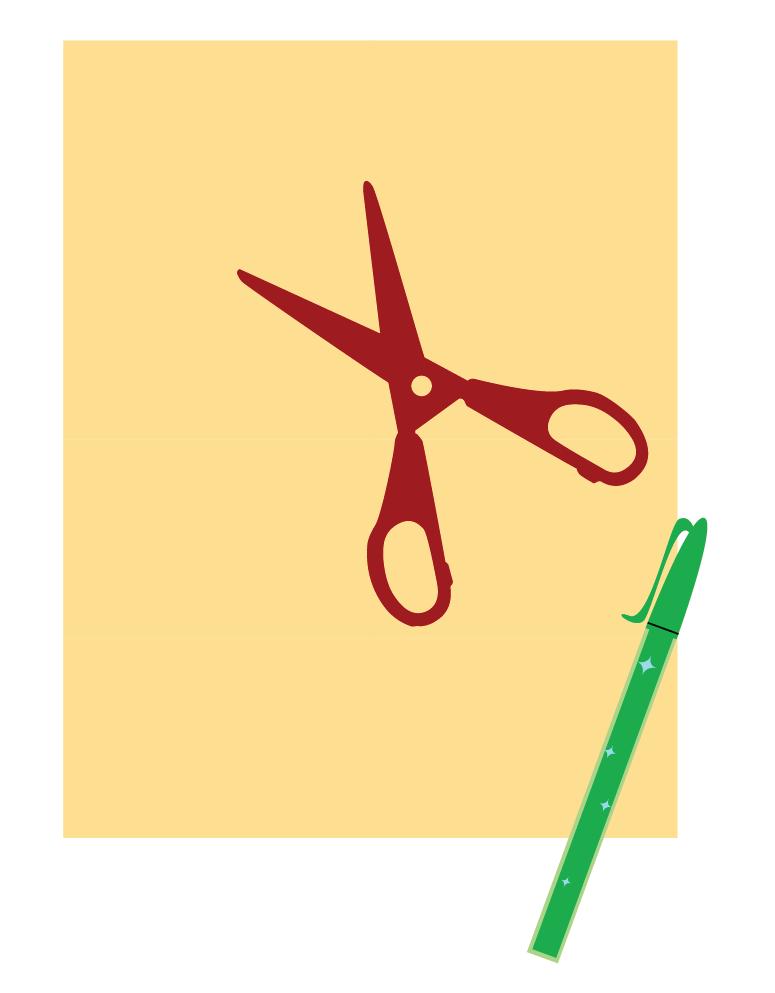

1 Fold your paper once the long way (hot dog length). Dobla el papel una vez a lo largo (longitud tipo hot dog).
2 Fold it again in half (hamburger length). Unfold the paper. Vuelve a doblarlo por la mitad (longitud tipo hamburguesa). Desdobla el papel.
3 Fold the top and bottom toward the center. Dobla la parte superior al centro. Dobla la parte inferior hacia el centro.
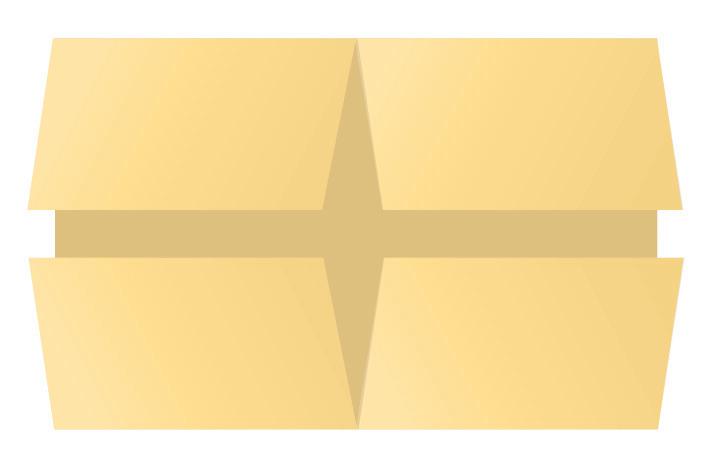
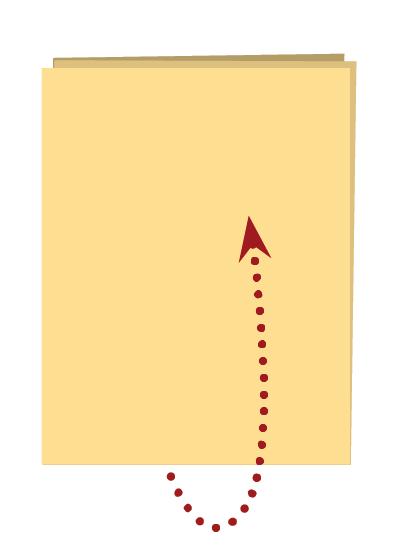

4 Cut the short fold lines to make four doors. Corta las líneas de pliegue pequeñas para hacer cuatro entradas.






5 Turn it around and add four categories to your foldable. Then keep your tallies! Dale la vuelta y agrega cuatro categorías a tu folleto. Ahora puedes marcar y llevar tu conteo!

The


The Shape of Spiderwebs
Shape of Spiderwebs Formas de las Telarañas
The Shape of Spiderwebs
The Shape of Spiderwebs
What shape is your spiderweb?
Are there any patterns or symmetry?
The Shape of Spiderwebs
How many radials does this spiderweb have?
What shape is your spiderweb? Are there any patterns or symmetry? ¿Qué tipo de forma tiene tu telaraña? ¿Hay algún patrón o simetría?
What shape is your spiderweb?
Are there any patterns or symmetry?
What if the web had more radials? Could it ever be a perfect circle?
If the web has 6 radials, it looks like a hexagon. A hexagon has 6 sides and angles.
What shape is your spiderweb? Are there any patterns or symmetry? does this spiderweb have?
If the web has 6 radials, it looks like a hexagon. A hexagon has 6 sides and angles.
What shape is your spiderweb? Are there any patterns or symmetry? does this spiderweb have?




If the web has 6 radials, it looks like a hexagon. A hexagon has 6 sides and angles.
If the web has 6 radials, it looks like a hexagon. A hexagon has 6 sides and angles.
Circles do not have angles or sides, like squares, triangles, or any other polygons do. The more sides a polygon has, the more it looks like a circle. This is why an octagon looks more like a circle than a diamond does.
If the web has 8 radials, it looks like an octagon. An octagon has 8 sides and angles.
If the web has 8 radials, it looks like an octagon. An octagon has 8 sides and angles.
If the web has 4 radials, it looks like a diamond or square.
If the web has 8 radials, it looks like an octagon. An octagon has 8 sides and angles.
Si la red tiene 6 radiales, parece un hexágono. Un hexágono tienes 6 lados y 6 ángulos iguales.
does this spiderweb have?
¿Y si la telaraña tuviera más radiales? ¿Podría llegar a ser un círculo perfecto?
If the web has 6 radials, it looks like a hexagon. A hexagon has 6 sides and angles.
⇧ How many radials does this spiderweb have?
What if the web had more radials? Could it ever be a perfect circle?
What if the web had more radials? Could it ever be a perfect circle?
What if the web had more radials? Could it ever be a perfect circle?
If the web has 8 radials, it looks like an octagon. An octagon has 8 sides and angles.
If the web has 8 radials, it looks like an octagon. An octagon has 8 sides and angles.
Si la red tiene 8 radiales, parece un octágono. Un octágono tienes 8 lados y 8 ángulos iguales.
Los círculos no tienen ángulos ni lados, como los cuadrados, triángulos o cualquier otro polígono. Entre más lados tenga el polímero, más es el parecido que tiene a un círculo. Esta es la razón por la que un octágono se parece más a un círculo que a un diamante.
Circles do not have angles or sides, like squares, triangles, or any other polygons do. The more sides a polygon has, the more it looks like a circle. This is why an octagon looks more like a circle than a diamond does.
Circles do not have angles or sides, like squares, triangles, or any other polygons do. The more sides a polygon has, the more it looks like a circle. This is why an octagon looks more like a circle than a diamond does.
Circles do not have angles or sides, like squares, triangles, or any other polygons do. The more sides a polygon has, the more it looks like a circle. This is why an octagon looks more like a circle than a diamond does.
What if the web had more radials? Could it ever be a perfect circle?
Circles do not have angles or sides, like squares, triangles, or any
Shapes in Nature | 7
Nature | 7
Shapes in
¿Cuántos radiales tiene esta telaraña?
Tessellation Leaves Teselado de Hojas
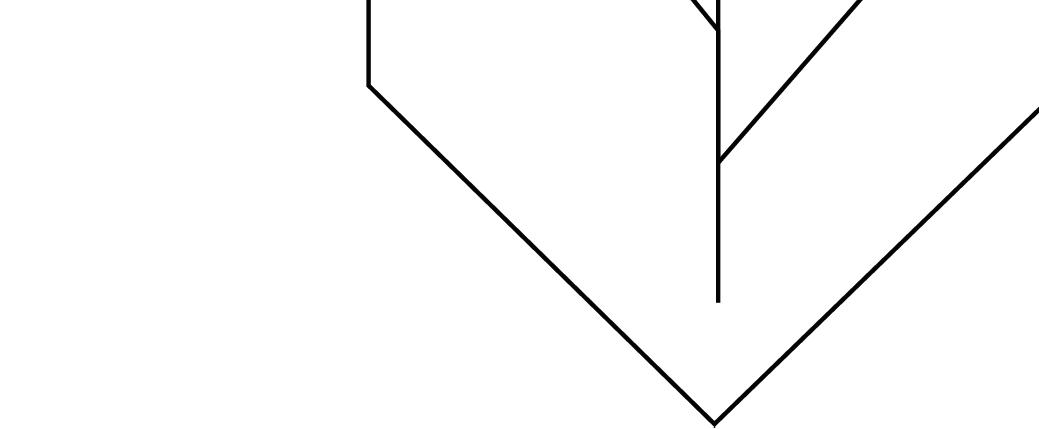
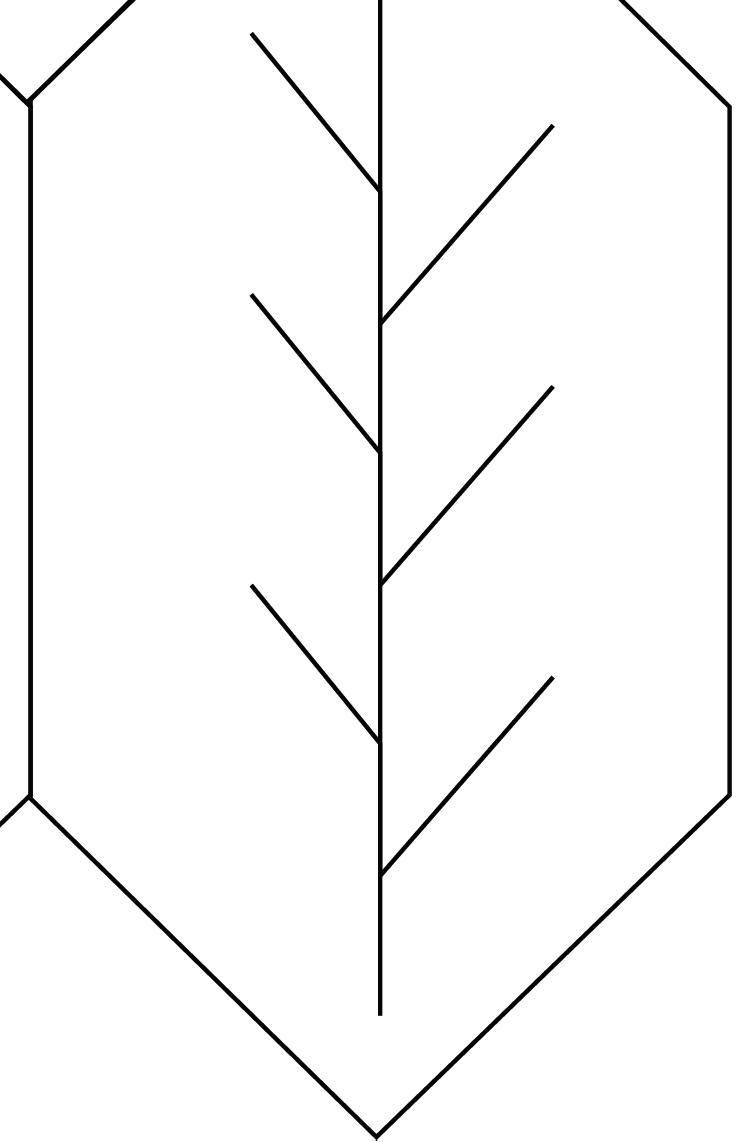
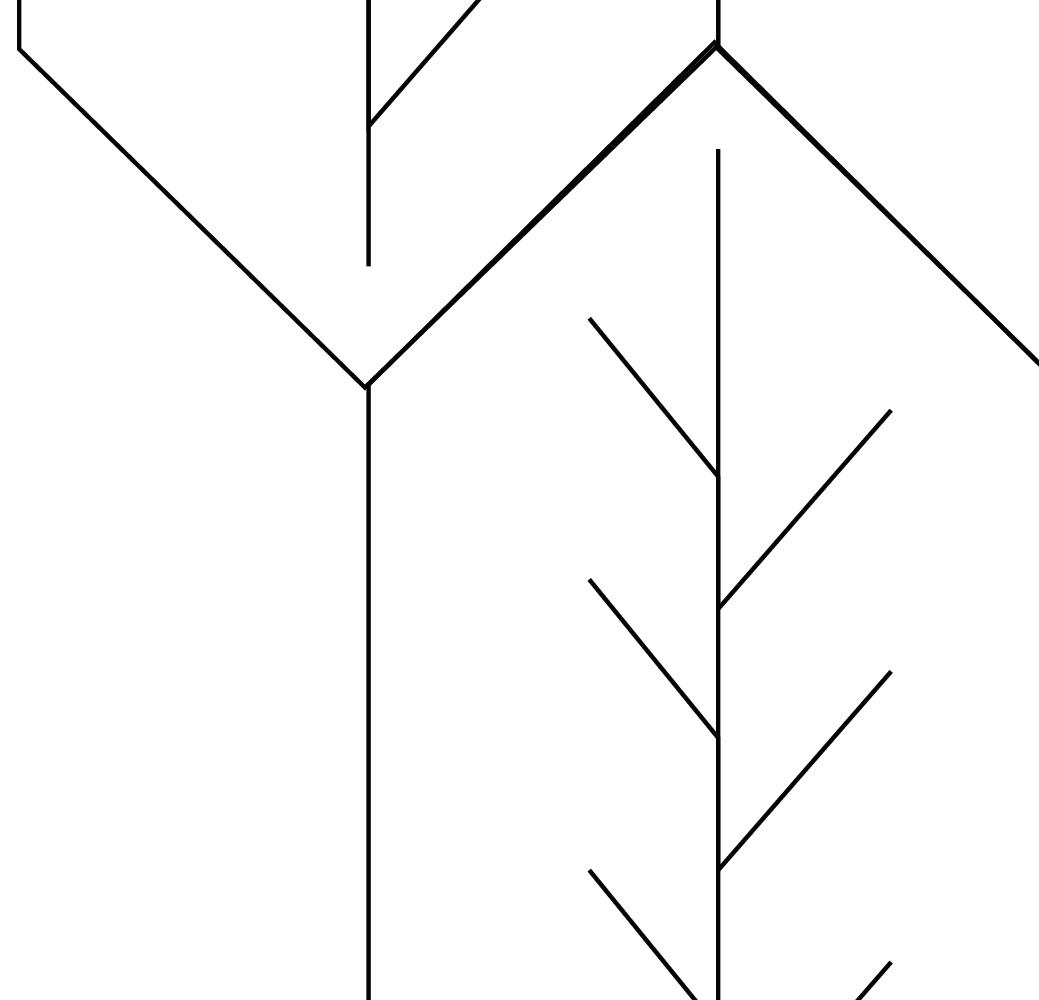

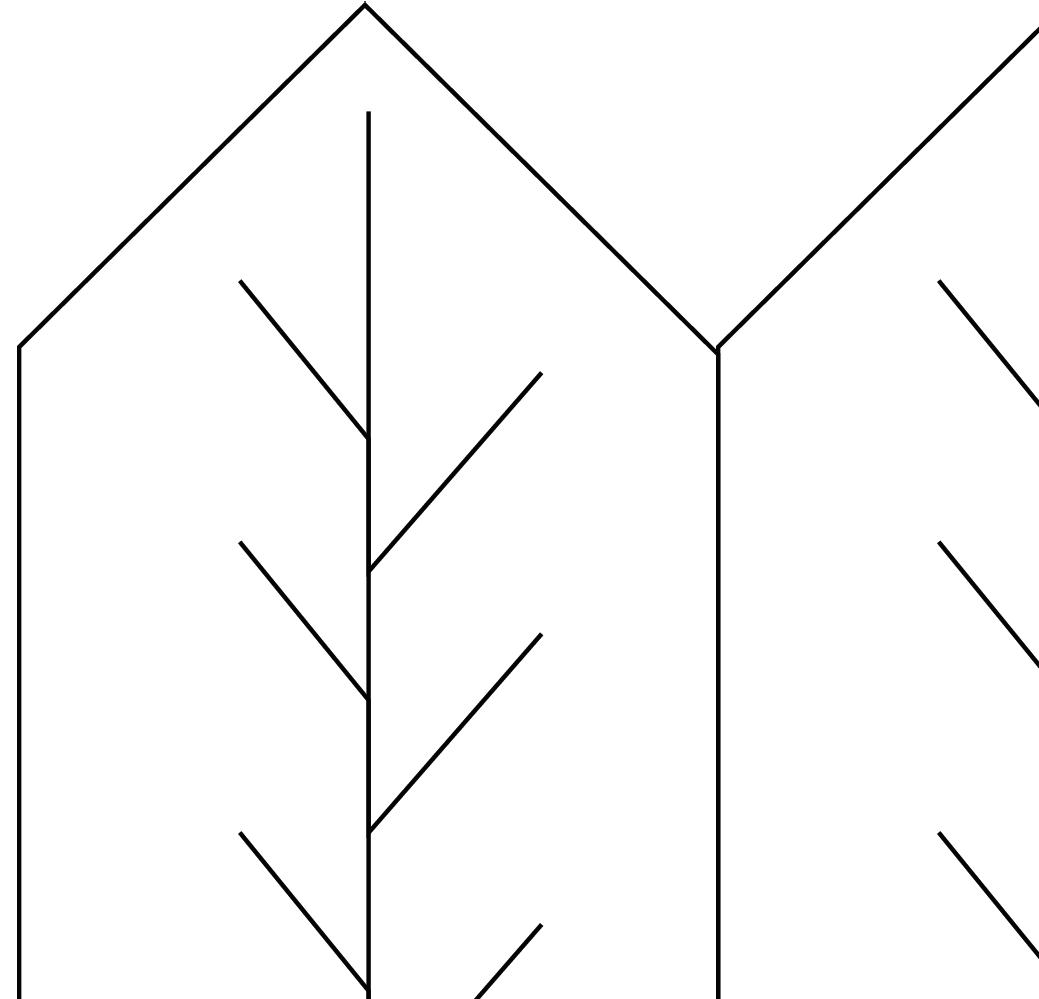


How to Collect Data About Birds Cómo Recopilar Datos Sobre Aves
Just like you observed natural objects, you can also collect and share data about birds. Here’s how:
1. Learn about the local birds. Where are you going? What kinds of birds normally live there?

2. Look for birds! Be very quiet, so you don’t miss any birds. Sometimes you’ll hear a bird before you see it, so look and listen very closely. If you see a bird but aren’t sure which kind it is, try to identify it using a eld guide.
3. Tally the birds you see. For example, if you see three cardinals, write the bird’s name or draw it. Then make three tally marks.

4. Count your tally marks. When you’re done, add your tally marks to nd the total number for each kind of bird. Add these numbers together to nd the total number of birds you saw.
5. Share your data. Think about what your data means. How can you share it with other people?
Al igual que observaste objetos naturales, tú puedes recolectar y compartir datos sobre aves. Aquí te decimos cómo:
1. Aprende sobre las aves locales. ¿A dónde van? ¿Qué tipo de aves (pájaros) viven normalmente allí?
2. ¡Busca aves! Sé muy silenciosa, para que no te pierdas ningún pájaro. En ocasiones escucharás un pájaro antes de verlo, así que observa y escucha con mucha atención. Si ves un pájaro, pero no estás segura de que tipo es, intenta identi carlo usando una guía de campo.
3. Cuenta las aves que ves. Por ejemplo, si ves tres cardenales, escribe el nombre del pájaro o dibújalo. Después agrega tres marcas de conteo.
4. Cuenta tus marcas de conteo. Cuando hayas terminado, suma tus marcas de conteo para saber el número total de cada tipo de ave. Después, suma estos números para encontrar el número total de aves que observaste.
5. Comparte tus datos. Piensa en lo que signi can tus datos. ¿Cómo puedes compartir esto con otras personas?
Date/Fecha
Time/Hora
Location/Ubicación
type/ Tipo de ave (pájaro)
Cantidad (conteo)
Bird
Tally/


























































